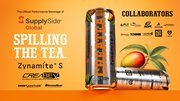Blog
More Social Media Hype Longer Than 140 Characters
June 15, 2015
TAGS: bulk vending, coin machine, coin-op machine, coin-op industry, vending machine, bulk vendor, coin-op business, small business, vending, vending operating, Vending Times editorial, Hank Schlesinger, Twitter, Facebook for small business, social media for vending |
In speaking with operators over the past several months it has become obvious that too many are not effectively using social media. One operator with whom I spoke proudly proclaimed he regularly updated his Facebook page with new equipment. Well yes, that's a start. However, it is a start that falls far short of the minimum.
The fact of the matter is that social media is one of the most underutilized promotional tools in the coin-op industry. Part of the problem, of course, is age. With many coin-op professionals falling into the dreaded 40-plus demographic, they neither recognize the value nor understand the dynamic of things like Twitter, Instagram, Vine or Tumblr. And unless their customers are in a similar demographic with little interest in social media, they are in fail mode.
For much of coin-op's target demographic, social media is more than another entertainment option. It is not a stretch to say that it's as much a part of their daily social lives as real-life friends, work colleagues and relatives. For many millennials, social media is where they plan their weekends, find dates and make myriad decisions, large and small. The distinction they draw between their online lives and real life is vague. And, just as in real life, it is ongoing, evolving, lively and ever changing. This runs counter to the many in coin-op who see social media posts as signage or ads, when it is actually dramatic.
In the New York City bar scene, venue owners have been encouraging employees to include photo content in their Twitter feeds -- selfies and images of regulars accompanied by commentary on special events. For instance, a special event might include an announcement and reminder, followed by concurrent tweets, post-event recaps and short details about the next event. That steady stream of tweets builds location loyalty and traffic. Customers build on this with their own tweets, too.
This concept has been taken to an extreme by savvy, high-profile brand names. Parties that cost well into six figures to promote the latest fashion trend or liquor may seem like an unconscionable waste of money, and two decades ago it would have been extravagant beyond all reason. Today, a party packed with connected people can reach upwards of 50 million interested followers with only a few tweets. A single reality television celebrity or rapper can send an image of a new product directly to millions in the target demographic in a few seconds.
Fortunately, that concept is scalable. The typical FEC doesn't need a Kardashian's 30 million Twitter followers. The active PTA parent, Little League coach or popular student with 50 to 60 followers is more than enough to boost business at a local FEC.
For street operators, perhaps no other medium is better suited for location and operator collaboration than social media. Special events centered around coin-op equipment can have an impressive and long-lasting positive impact if orchestrated right.
To be effective requires a commitment to an ongoing and sustained effort. Social media are slow build. It is very much like creating a route, one location at a time. It is also primarily a "soft sell." The product may not be an FEC or particular piece of equipment. The product is entertainment. Millennials have grown up at a time when the line between entertainment and promotion are nearly nonexistent. For instance, are music videos a promotional product created to sell a song or form of entertainment? A blatant sales pitch through social media is one that is quickly ignored or incurs the wrath of a key demographic. Again, social media is not signage -- it is life in real time.







